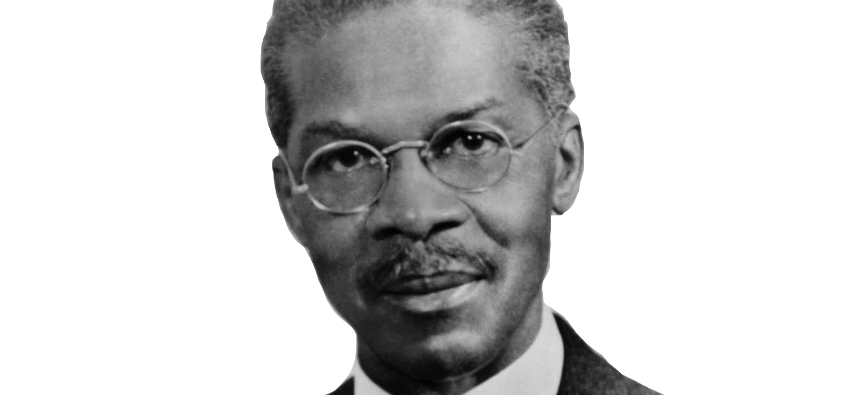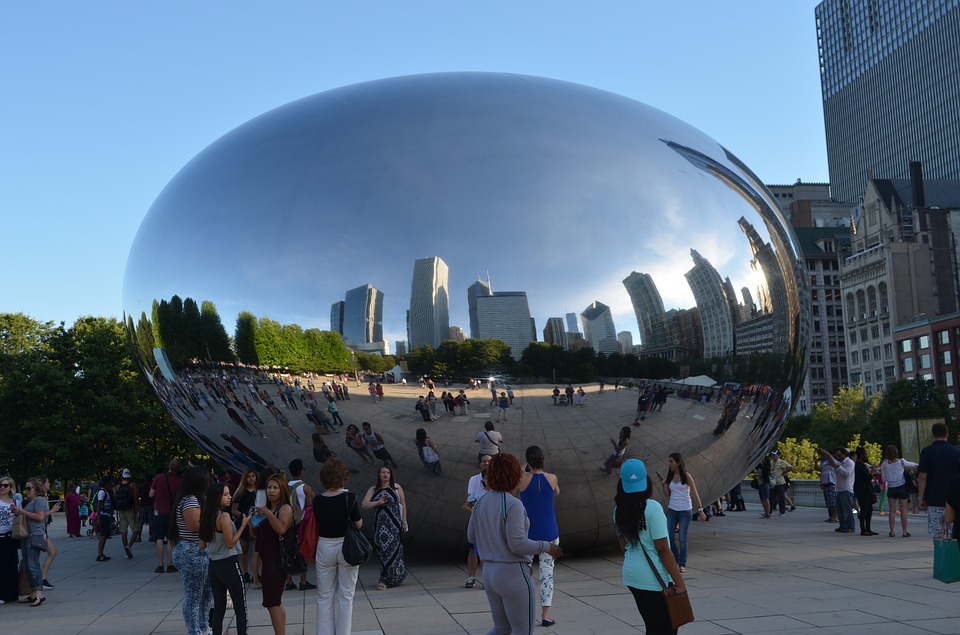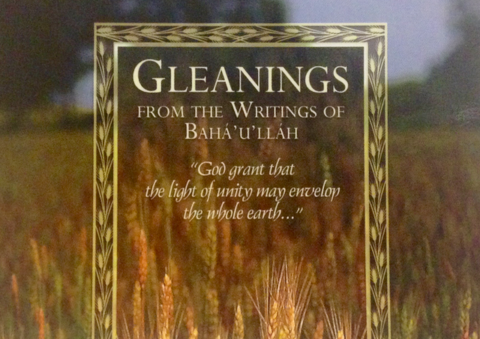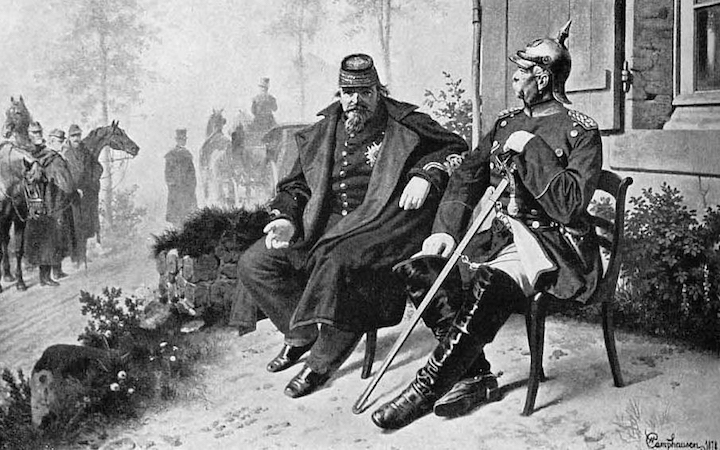
Louis Gregory – Service to the Oneness of Humanity

Slavery was not a tale read from dusty history books for Louis Gregory. It was a close family memory. Louis Gregory was born in 1874. Both Louis’ parents had been freed from slavery by the civil war. His grandmother on his mother’s side, was an African transported to America as a slave in the Atlantic slave trade, and his grandfather was her white master.
When Louis was four his father died. At age 7, Louis Gregory witnessed the murder of his African American grandfather by the Ku Klux Klan, because of his grandfather’s success as a blacksmith. At age 17 Louis lost his mother, who died in child birth.
From these difficult beginnings, his life began to turn with the help of his step-father. He was able to go to university, enrolling in Howard University’s law program and graduating in law. By 1907 he was working for the US Treasury Department.
In that same year he attended a talk on the Baha’i Faith by Lua Getsinger and over the next two years he attended Baha’i meetings becoming a Baha’i in 1909. He wrote to Abdu’l Baha and the reply received called him to work for the Baha’i Faith and racial unity. He dedicated his life to both.
I hope that thou mayest become the herald of the Kingdom, become the means by which the white and colored people shall close their eyes to racial differences, and behold the reality of humanity, that is the universal truth which is the oneness of the kingdom of the human race….[1]
Abdu’l Baha was talking of a beautiful principle – but he didn’t mean it just as a distant ideal. Indeed he meant it so concretely and intimately that he asked Louis Gregory and Louisa Matthews, an English white woman, to marry each other, something which they did. It was the era when “race mixing” was condemned as illegal in 21 states of the United States.
Earlier, when Louis Gregory had visited Abdu’l Baha in the Holy Land, Abdu’l Baha emphasised the idea:
‘Abdu’l-Bahá was asked if, in view of the difficulties in the way of interracial unity for all meetings, the colored friends should organize separately to observe the nineteen-day unity meetings. “The colored people must attend all the unity meetings. There must be no distinctions. All are equal. If you have any influence to get the races to intermarry, it will be very valuable. Such unions will beget very strong and beautiful children. If you wish I will reveal a Tablet in regard to the wiping out of racial differences.” This was not the first time He had spoken of this matter and with emphasis. I thanked Him.[2]
Louis gave up his legal career in order to dedicate his life to promoting the Baha’i Faith and to working for ending racial prejudice in various contexts. He was elected to the National Spiritual Assembly of the Baha’is in the United States as soon as it was established, the first African American to serve on it. He worked together with figures such as Alain Locke and Agnes Parsons, on race amity conferences, which Abdu’l Baha had asked be convened.
Despite his administrative duties on the National Spiritual Assembly he never flagged in his efforts to teach the Baha’i Faith. From 1910 he began to travel to the South to promote the Baha’i teachings, finding considerable interest among African Americans in the Baha’i teachings. In 1916 his travels talk him saw him speaking to 15,000 people. His life of service was to continue for decades. In the late 1930s Louis and his wife travelled to Haiti, to help establish the Baha’i Faith there. They returned to the United States continuing their work there until the late 1940s when Louis’ failing health made further travel impractical.
Something of the reality of racial segregation against which Louis Gregory worked, is captured by the following:
In the South, … [he] spoke to racially mixed audiences on a number of occasions and at times to white groups, …
Once, while visiting Miami, he and two white women from the North arranged for twenty-one Bahá’í meetings in a fortnight, attracting people of both races. At the end of his stay, the three took time off for a little sightseeing and a picnic on a beach that happened to be in the white section of town. Afterward, a friend asked him whether he realized that all the African Americans were praying for him because, not being from the area, he obviously failed to realize how dangerous it was to be seen with white women. Gregory replied that, having been born and reared in the South, he knew its customs well (“about as well as “Brer Rabbit in the briar patch”) but found his protection in God: “If He does not hold me I am unsafe anywhere.”[3]
Like Martha Root, Louis Gregory is one of a small band of outstanding individuals posthumously appointed by Shoghi Effendi, then leader of the Baha’i Faith, to the rank of “Hand of the Cause of God” – a statement reflecting the reality of a spiritual life of service.
To end this article the following are some of Louis Gregory’s thoughts on the question of race. He wrote in the 1930’s, at a time when human thought was dominated by ideas of racial and national divisions.
” … The divisions of mankind upon the basis of physical features are due to fancy rather than reality. … All the so-called races of mankind are mixed races, the mixing being a process which continues more rapidly today than in past cycles and ages. … However much opinions and emotions and customs may dominate human thoughts, the scientific world of today which reaches conclusions upon the basis of facts, is entirely agreed that there is no proof to establish the superiority of one racial group over another. …
A distinguished Southern educator who heard the Servant of God, His Holiness ‘Abdu’l-Bahá, address the Lake Mohonk Peace Conference in 1912, quotes Him as opening His luminous address by saying:
“From time immemorial we have been taught the Unity of God, the Unity of God, the Unity of God! But in this day the divine lesson is the unity of man, the unity of man, the unity of man!” …
… racial difference is an optical illusion! It is a figment of imagination, yet how deep-seated and powerful its influence! No one can deny the fact that mankind in toto are the progeny of Adam; that they are offshoots of one primal stock, yet the optical illusion has so radically misrepresented this plain truth that they have divided and subdivided themselves into so many tribes and nations… Although many intelligent men amongst them know that this racial difference is an optical illusion, yet they all confess their inability to stand firm before its uncanny, invisible power.
… To forsake prejudice is better than to amass wealth. The conquest of animosities is far greater than victory over one’s foes. The struggle for universal good is far nobler than the desire for personal success.
The Glory of the rising Sun reveals the way. …
The shadows of the sunset and the glory of the dawn are both revealed in the Words that follow from the pen of ‘Abdu’l-Bahá:
“……that mankind must love mankind; that universal amity must be practiced; that dead dogmas must be thrown away; that we are at the threshold of the Era of Interdependence; that we must forget prejudice and that universal love must become the dominant note… The tree of humanity is one and is planted by God. The origin is one and the end must also be one.”[4]
Image Credits: Image reproduced under site licence from bahaiteachings.org, article on Louis Gregory.
(This article is the 63rd in a series of what I hope will be 200 articles in 200 days for the 200th anniversary of the birth of Bahá’u’lláh. The anniversary is being celebrated around the world on 21 and 22 October 2017, The articles are simply my personal reflections on Bahá’u’lláh’s life and work. Any errors or inadequacies in these articles are solely my responsibility.)








